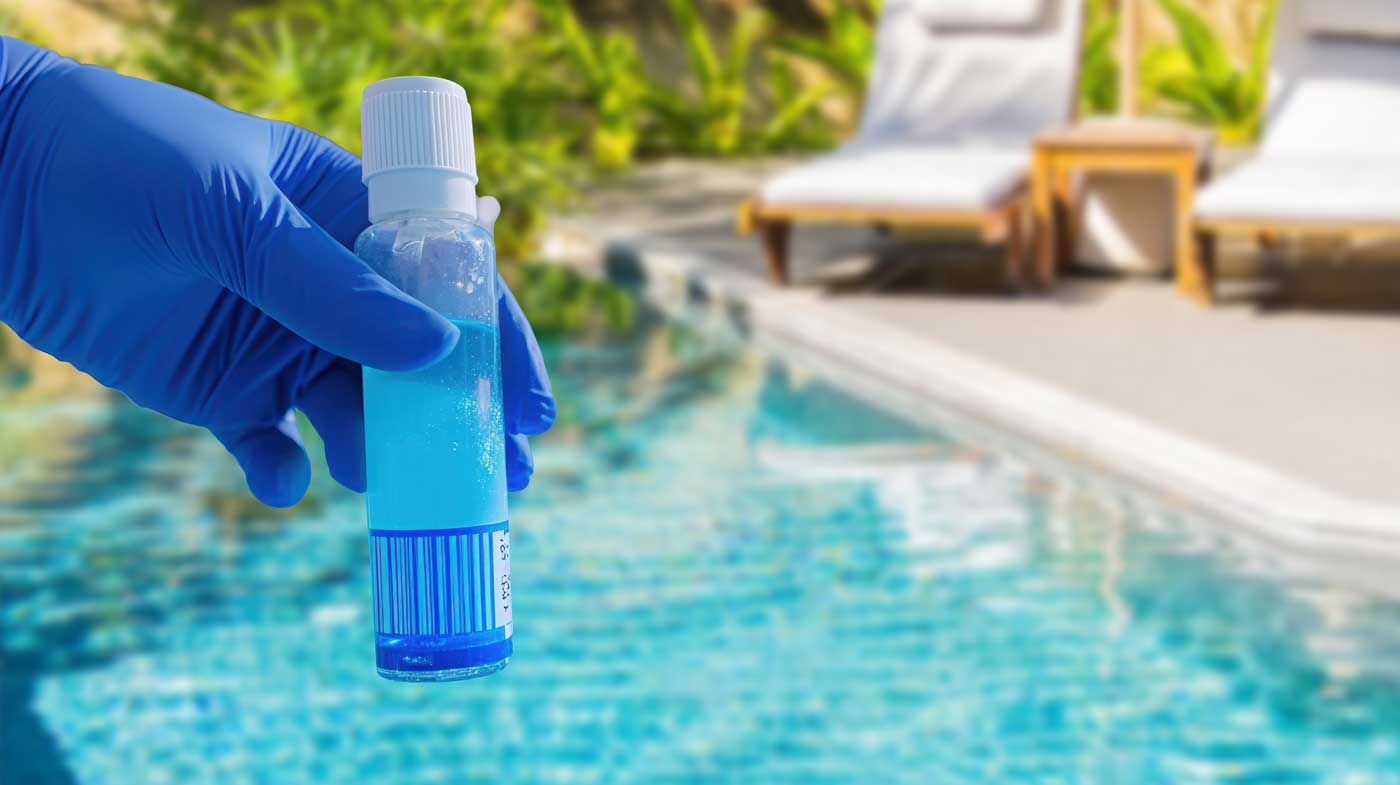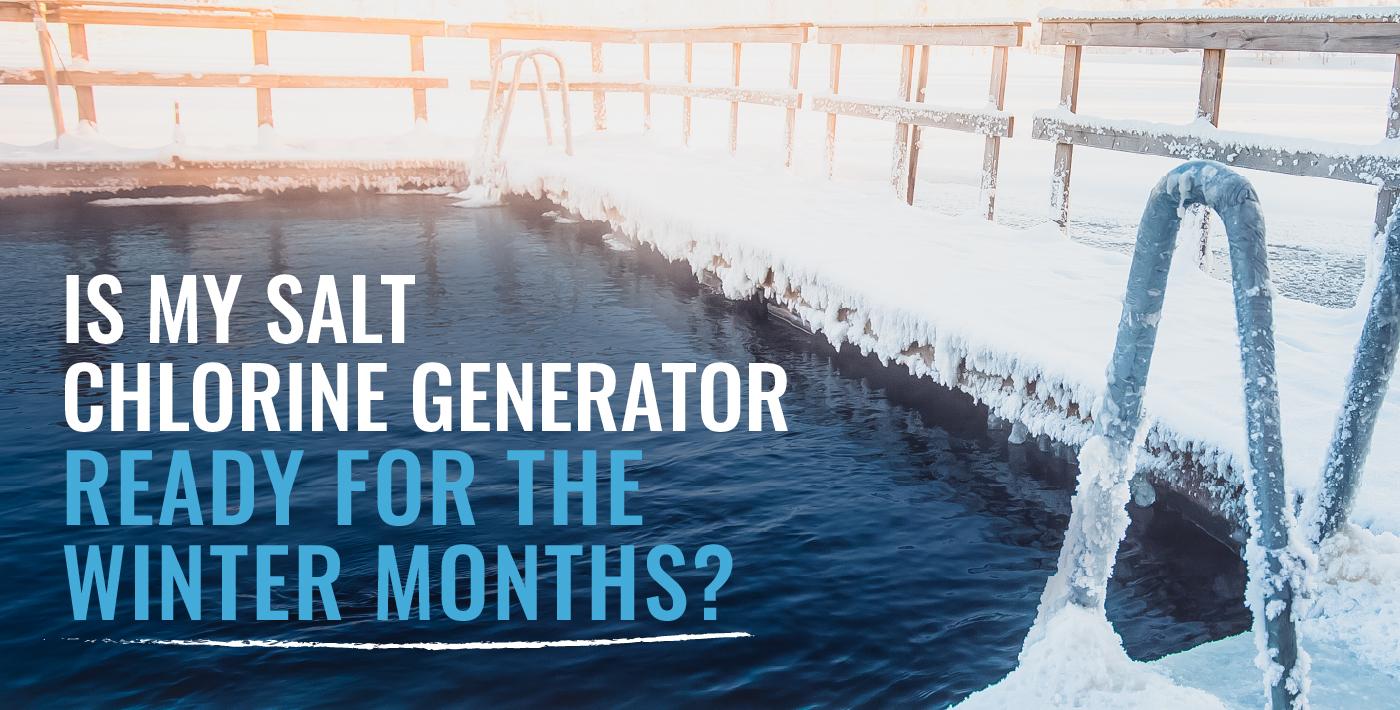Also, warranties can be voided if improper water chemistry is determined to be the reason…
Salt Chlorine Generators (SCGs) do a terrific job of making chlorine for the pool owner. They produce all the chlorine you need on-site, without having to store it. They allow you to adjust the amount of chlorine your pool receives. And they are economical over the long term, compared with other chlorination methods.
Salt Chlorine Generators are not complicated, but to get the most out of your unit, you need to understand the various components that make up the system. Let’s see how SCGs work, so you can operate yours safely with many years of dependable service.
Power Supply – The power supply converts power line voltage to a low voltage that is used by the salt cell to produce chlorine. Adjustments are provided on the power supply to control how much chlorine is produced. The power supply also includes warning lights or error message displays to help warn of problem conditions. Finally, the power supply monitors the flow protection device and cell to ensure that the chlorine generation process works as intended.
If the power supply is not configured to control the pump directly, it should be wired so that it powers up when the pump is turned on. When the pump is turned off, the power supply should also be powered off. An external time clock can control the power-on and power-off times.
In some installations, the power supply can be used to control the circulation pump’s on and off times, instead of using an external time clock. In this configuration, the power supply would be powered on at all times. If the power supply is not wired to shut the pump off if there is a circulation problem, you must assure that a means exists to monitor the flow protection at all times when the pump is running or damage to the pump may result.
Electrolytic Cell – This is the device that generates chlorine. All cells are made up of a cell body, contact points, and electrodes (blades). The cell body may or may not be translucent. A translucent body helps to visually inspect the cell for debris within the cell.
The cell body will have several external metallic contact points that are used to connect the cell to the power supply. Each contact point will be welded to two or three terminal electrodes within the cell body. Every cell contains several electrodes. The electrodes are not in contact with one another, but Direct Current (DC) is passed between them through the water as it circulates. Although the water itself is conductive, it is not conductive enough to pass the current needed for the electrolysis process that produces chlorine. Therefore, salt is added to increase the conductivity of the water.
The blades are typically made of titanium with a special precious metal coating of Ruthenium Oxide. The Ruthenium Oxide sacrifices itself in the electrolysis process to produce chlorine. When the Ruthenium Oxide is fully depleted, the cell must be replaced. The number of blades and the amount of current that passes through the cell determines how much chlorine a cell can produce over its lifetime. Experts recommend that you select a cell that is oversized for your pool. Getting the largest cell you can afford will help ensure that the cell’s output level remains below its maximum rated value, which will greatly extend the cell life.
Flow Protection – According to UL1081 electrical safety regulations, there must be a flow protection device for inline salt chlorine generators. There are two basic methods of flow protection:
- Gas Trap: The gas trap relies on electrical contact between two specific contact points within the cell body. These contact points will have continuity only when the, the circulation pump has evacuated any trapped gases and air from the cell body. Only then, can the cell be safely energized.
In order for the gas trap to work properly, the cell must be mounted level, both vertically and horizontally. The contact points that determine the electrical continuity are usually around the same area as the cell contact points. Circulation pumps, especially variable speed pump, should be set so they start at a higher-than-normal RPM (flow rate), so that proper evacuation of gases and air is achieved. The amount of time needed to achieve continuity will vary, depending on flow characteristics of the system.
- Mechanical Flow Switch: This is usually a flat paddle located in the water flow stream that presses against a magnetic micro-switch when proper flow is achieved. When the micro-switch is closed, the power supply activates the cell. A flow switch is usually better and quicker than a gas trap at responding under- or low-flow conditions. It also works better when using a variable speed pump at lower RPMs.
The flow switch should always be located directly before the location of the cell, and on the same plumbing line. This is especially important for pools that have an attached spa, where the plumbing splits between the two bodies of water.
Salt – a critical component because it adds conductivity to the water, as described earlier, and also provides a base to produce chlorine. Salt is really Sodium Chloride (NaCl), which leaves chlorine residue in the water as a result of the electrolysis process.
Salt is not lost in the production of chlorine, rather, the Ruthenium Oxide is depleted. However, salt is lost in other ways. Leaks will result in rapid salt loss, filter backwashing (DE or Sand filters) will wash salt out of the system, and salt is lost because of bather splash out. The rate at which the salt is lost depends on the severity of the leak, the amount of splash out, and the frequency and length of back wash cycles. Under normal operation, you may need to only add the amount of salt needed to replenish these normal losses. Proper salt levels can usually be maintained by adding salt once or twice a year. If leaks are present, they must be located and repaired, or salt will need to be added more frequently.
All salt systems will require the salt level to be maintained within a certain range for proper operation. Regular maintenance and inspection of your salt level should be enough to maintain your salt level.
Another important factor with outdoor pools is the stabilizer (also called conditioner and cyanuric acid), which is needed to help prevent the premature depletion of chlorine due to the sun’s UV rays. If a pool is controlled by an Automatic Chemical Controller (ORP/pH Controller), recommended stabilizer levels are between 30 – 50 ppm. For manually controlled pools, which include most systems, stabilizer levels should be kept between 60 – 80 ppm. Do not exceed 100 ppm, as it will create the need to maintain a much higher chlorine level.
Finally, proper overall water chemistry balance, often called the Langelier’s Saturation Index, is important to keep the cell free of calcium scale formation. Scale formation will deplete the cell prematurely. By maintaining your water chemistry, however, you will experience very few incidences of scale formation on the cell. This will make it easier to maintain your pool and provide optimum cell life.
Online apps are available to help determine whether your water is balanced. Your local pool professional can also test your water to determine the Saturation Index, and can advise you regarding what chemicals you need to achieve balanced water conditions. Testing your pool water at least once per month should help you identify any fluctuations before they become a serious problem.
Should you have any problems with your salt system, the most basic of diagnostics will narrow the problem to one of these components. Knowing and understanding what these components do, and how they contribute to the operation of your salt system, will help you to solve most problems. If the maintenance we described does not correct problems with your salt chlorination system, contact the manufacturer for assistance.



This Post Has 0 Comments